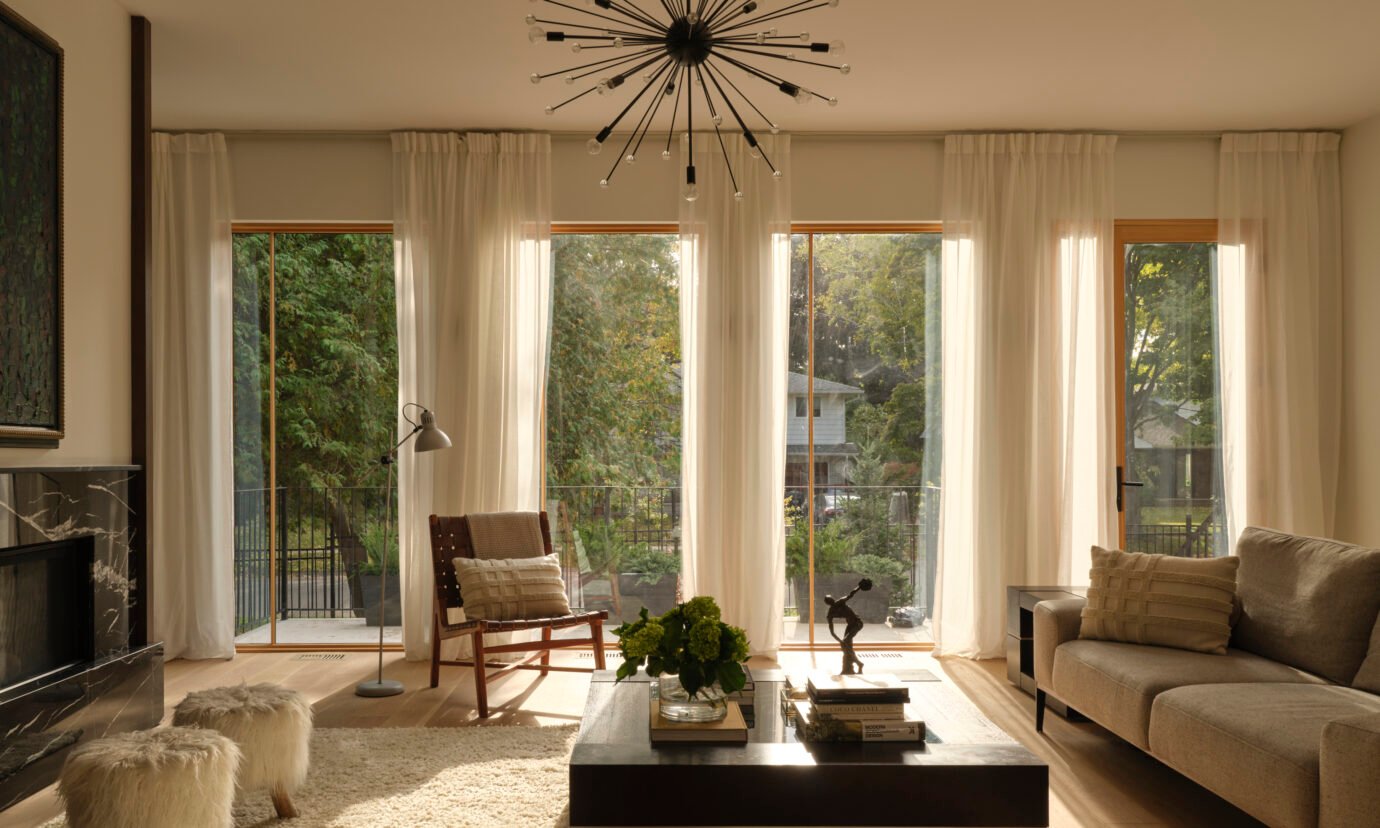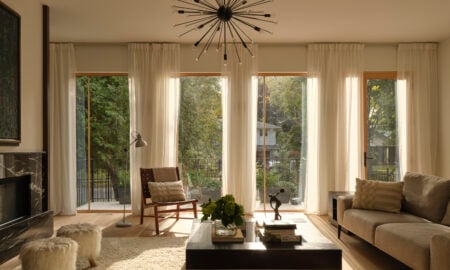A Light-Filled Mississauga Home That Breaks the Mold


Forget front and back—this corner-lot dwelling blurs the lines with intersecting forms and a layout that responds to sun, sightlines and privacy
On a quiet suburban street in Mississauga, where residential design often plays it safe, a striking new build stands out. Designed by Architecture Riot, Crossroads House challenges the conventions of an a-typical corner lot. Defined by its intersecting bar layout and seamless integration with its landscape, the house is a thoughtful response to both its physical site and its owners’ multigenerational lifestyle. It’s the kind of home that reminds you what good architecture can do: shift perspectives, challenge norms and elevate the everyday.
“The vision for the house was to craft a spatially light-filled residence that responds to its suburban context,” says Architecture Riot’s Sally Kassar, who led the project along with Ava Nourbaran from concept to completion. “Because it’s situated on a corner, we wanted to take full advantage of that positioning—creating two facades, each oriented to the adjacent streets.” The result is a dual-frontage layout formed by two perpendicular bars: one long, one short.
This approach also allowed the team to break away from the traditional notion of a front and back. Instead, the house reads as a continuous form with three exposed faces and only one concealed side abutting a neighbouring property. “You walk around the corner and ask yourself: ‘where is the front of the house?’” says Kassar. “That ambiguity is part of what makes the experience feel so open and inviting.”
Inside, a central staircase anchors the home while delineating zones for different functions—a formal living space and office on one side, with a more casual family room and kitchen on the other. “That bar layout created a rhythm,” says Kassar, “but it also gave us the opportunity to avoid awkward transitions, especially around corners. Even though the volumes intersect, the interior planning is completely rational.”
That same rationality guided the connection between indoor and outdoor spaces. At every opportunity, the team emphasized views toward the landscape—framing mature birch trees through expansive windows and creating sightlines that stretch through the home to the streets beyond. The family room opens directly onto a wide patio and side yard, with plans to add a pool visible from the kitchen and living spaces.
Materiality plays a key role in bridging interior and exterior. Warm oak flooring and walnut millwork echo the tones of the surrounding landscape, bringing a tactile, earthy calm to the interiors. Even the windows—wood on the interior, aluminum-clad on the exterior—feel deliberately chosen to support that dialogue. “They’re not black or white frames,” Kassar explains. “They’re part of the overall palette, and they help soften the transition between indoors and out.”
Despite its clarity, building Crossroads House wasn’t without its challenges. Being located on a corner meant navigating two front setbacks and zoning limitations, which required multiple minor variances—including approval for a below-grade side entrance. “We couldn’t just tuck it away in the back,” says Kassar. “We wanted it to feel like a natural extension of the home.” Careful coordination was also required for the home’s complex foundation and intersecting roof trusses, not to mention the meticulous alignment of materials like stucco, stone, and window trim.
That level of detail reflects the practice’s design ethos: to treat interior and exterior as a single, unified idea. “We don’t hand off the interiors to someone else,” says Kassar. “We believe in a seamless architectural experience, one where every junction and transition is intentional.”
While the design is undoubtedly ambitious, it’s rooted in the practical needs of the couple who commissioned it. Older and planning for the long term, they envisioned a flexible, multigenerational home—one that would welcome their children and grandchildren while offering privacy and comfort for all. Every bedroom features its own ensuite and walk-in closet. The basement houses a generous communal space with a bar and bathroom, offering a casual hangout for visiting family and easy access from the future pool.
Even with the home’s generous footprint and considered amenities, the project was delivered quickly—taking just two years from design to completion. “The clients were very clear about their needs, and that helped move things along,” says Kassar. “They saw the potential in the lot and wanted to make the most of it. We knew from the start it was a special opportunity.”
Crossroads House is more than just a well-built home—it’s a case study in thoughtful residential design. One that reimagines the corner lot not as a constraint but as a canvas. And in doing so, it sets a new precedent for how suburban infill can feel fresh, functional and deeply connected to its surroundings.









































